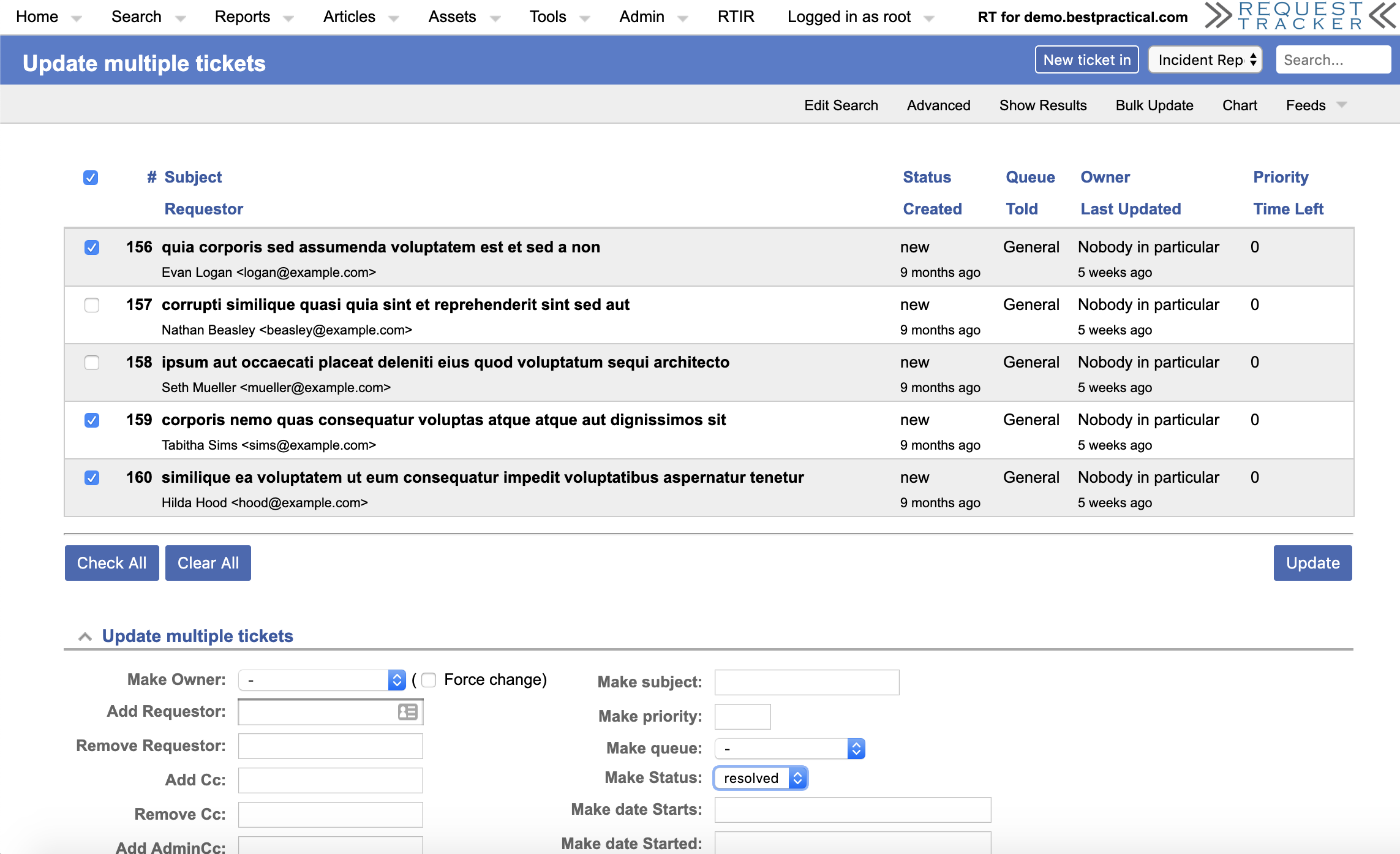We are very excited to announce that Request Tracker (RT) 5.0.0 is now available for download! We have been running the new version since late last year and it’s been great using the new theme and new features. As mentioned in our earlier alpha and beta releases, here are some of the new features you can look forward to:
New light and dark themes based on Bootstrap
Inline editing of ticket information
New Chart.js charting engine
Query builder support for transactions and assets
Graphical lifecycle editor
New interface for managing dashboard content
REST 2.0 API and token authentication
These and many more features and updates are listed in the full release notes.
Request Tracker for Incident Response (RTIR) 5.0.0 is also available. The theme has been updated to be compatible with RT and here are some new features we added:
New tool to read and easily create incidents from security feeds
Deeper integration with RT's core search and charts for improved reporting
Automatic domain parsing from email similar to existing IP parsing
You can see the full list of changes in the RTIR release notes.
We’ll be hosting a free, live session July 30th at 10AM US Eastern time to show off some of the new features. Reserve your spot today.
If you are upgrading, be sure to read all of the upgrade notes for RT and, if applicable, RTIR. If you would like assistance with your upgrade, are interested in exploring our on premise or hosted RT solutions, or would like to see a demo of what’s new in RT 5, drop us a line.
We'll have much more information on RT 5 in the weeks and months to come, so continue to watch our blog for details. In the meantime, enjoy the shiny new RT 5, we certainly have been!

















